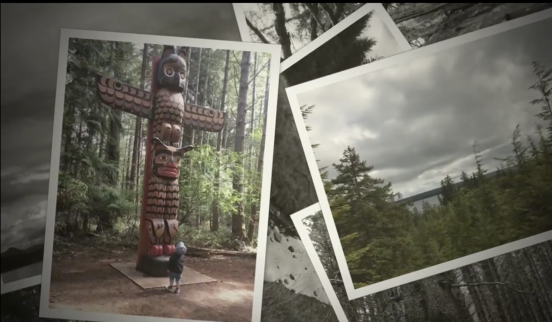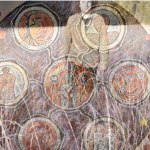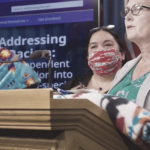Over the summer I worked at a fishing lodge in Haida Gwaii, which translates to Islands of the People. Although I was not working directly with Indigenous peoples I was living on land that holds a tremendous amount of history for Indigenous peoples. I chose to use some of the photos of the land and animals that I was surrounded with during my summer spent on this sacred space. I cannot describe the feeling that living on Haida Gwaii gave me. All I can say is it was a honour to see such beautiful, untouched land and to think about the stories that must have come from this area years ago. My hope was that the images I chose represent the beauty and the silence that this land possesses. It has a very special and emotional place in my heart. I was also given the opportunity to go to the nearby Kung village, where two watchmen took myself and four other people on a tour of the village and explained, as best they could, what took place at Kung and why it is a sacred and emotional place for Indigenous peoples today. The pictures of the trees growing in unique ways are taken at Kung. My intention with using pictures that I photographed myself was to add a personal piece to my presentation. The narratives that were shared were personal and it must have taken a lot of bravery to publicly share very vulnerable pieces of their lives, such as the various forms of abuse that took place at the Residential Schools. Although I did not share much about myself I chose to introduce myself and add photos that I took out of respect to those that shared their narratives with me.
The quote I refer to in my presentation was found in the article, Response to Canada’s apology to residential school survivors. This particular quote spoke to me as a woman and put into perspective the need to not only speak about the wrongdoings of the past but to also put those words into action. The need for action is what I hope was captured in this quote. As well as the fact that the results of Residential Schools is still impacting many people today, which I believed fit with many of the narratives that were shared. I believe this quote was important to share because it acknowledges that the government has apologized for what took place in history while also speaking to what else needs to be done moving forward. Acknowledging the past is a valid start to reconciliation but there is a lot more to be done after this acknowledgement has taken place. The steps moving forward may be difficult, but I call to both myself and those that wrote the narratives to move forward together.
The process of reading, reflecting, and responding to the narratives was an . emotional process to say the least. There are many times when I feel overwhelmed when asked to write about this topic because I believe I have so much more to learn and that my words are not doing enough. I must stop myself and recognize that it is okay to not have all the answers or knowledge. Simply taking a step in educating myself on the topic and being open to learning from others is a step in the right direction. I remind myself to have empathy with everyone that I meet and recognize that people are fighting internal battles and that a kind and non-judgemental attitude can go a long way.
Kaylin Compton
References
Jacobs, B. (2008). Response to Canada’s apology to residential school survivors. Canadian Woman Studies, 26(3/4), 223. Retrieved from
https://search-proquest-com.ezproxy.viu.ca/docview/217446062?pq-origsite=summon&accountid=12246





